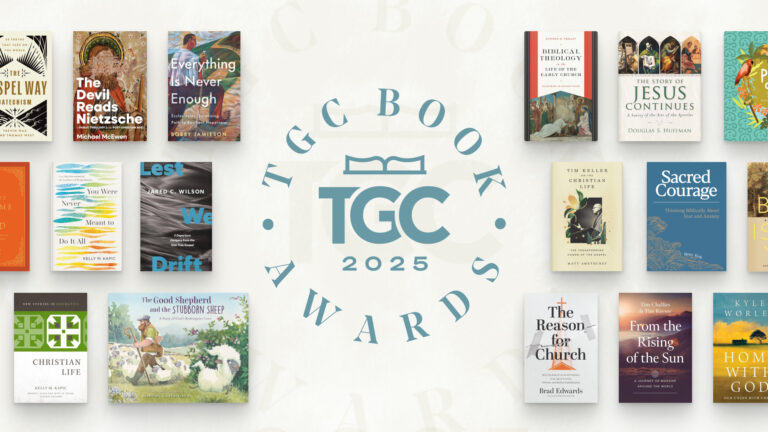The beginning of a New Year is an an excellent time to try something new. As you make your list of resolutions and goals I want to recommend adding a simple four step process that could transform your life by, quite literally, changing your mind.
After reading the entire post the vast majority of readers will snicker at such a hyperbolic claim and never implement the method I outline. A smaller number will consider the advice intriguing, my assertion only a slight exaggeration, but will also never implement the method. A tiny minority, however, will recognize the genius behind the process and apply it to their own life. This group will later say that my claim was an understatement.
This post is written for those people.
A few years ago I stumbled across a variation of the four steps in an article by theologian Fred Sanders and implemented his recommendation that day. I later had the pleasure of meeting Sanders in person and telling him how his post had transformed my life. My hope is that at least one other person will follow this advice and experience the same transformative effect.
Before I reveal the four steps I want to reiterate that while the advice could transform your life, it likely will not. As with most life-altering advice, it is simple, easy to implement, and even easier to ignore. Statistically speaking, the odds are great that you’ll ignore this advice. But a handful of you will try it so for the one or two people who will find this useful, the four steps that will transform your worldview are:
1. Choose a book of the Bible.
2. Read it in its entirety.
3. Repeat step #2 twenty times.
4. Repeat this process for all books of the Bible.
Christians often talk about having a Biblical worldview yet most have only a rudimentary knowledge of the Bible. They attempt to build a framework without first gathering the lumber and cement needed to create a solid foundation. The benefits of following this process should therefore be obvious. By fully immersing yourself into the text you’ll come to truly know the text. You’ll deepen your understanding of each book and knowledge of the Bible as a whole.
Since this method is adapted from a book by James M. Gray (1851-1935), How to Master the English Bible‚ I’ll let him explain in his own words:
The first practical help I ever received in the mastery of the English Bible was from a layman. We were fellow-attendants at a certain Christian conference or convention and thrown together a good deal for several days, and I saw something in his Christian life to which I was a comparative stranger—peace, a rest, a joy, a kind of spiritual poise I knew little about. One day I ventured to ask him how he had become possessed of the experience, when he replied, “By reading the epistle to the Ephesians.” I was surprised, for I had read it without such results, and therefore asked him to explain the manner of his reading, when he related the following: He had gone into the country to spend the Sabbath with his family on one occasion, taking with him a pocket copy of Ephesians, and in the afternoon, going out into the woods and lying down under a tree, he began to read it; he read it through at a single reading, and finding his interest aroused, read it through again in the same way, and, his interest increasing, again and again. I think he added that he read it some twelve or fifteen times, “and when I arose to go into the house,” said he, “I was in possession of Ephesians, or better yet, it was in possession of me, and I had been ‘lifted up to sit together in heavenly places in Christ Jesus‚’ in an experimental sense in which that had not been true in me before, and will never cease to be true in me again.”
I confess that as I listened to this simple recital my heart was going up in thanksgiving to God for answered prayer, the prayer really of months, if not years, that I might come to know how to master His Word. And yet, side by side with the thanksgiving was humiliation that I had not discovered so simple a principle before, which a boy of ten or twelve might have known. And to think that an “ordained” minister must sit at the feet of a layman to learn the most important secret of his trade!
Rather than wasting time attempting to defend the wisdom of applying this method, I’ll close with a few helpful suggestions for putting it into practice:
1. Choose shorter books and work up to longer ones. Since you’ll be reading an entire book of the Bible and not just a chapter or two, you’ll want to work your way up to more extensive readings. When beginning this program you may want to start with a short book that has only a few chapters that can be read several times in one sitting. This will give you a sense of accomplishment and help develop the reading habit. For example, a short book like John or Jude can be read four or five times in one sitting allowing you to finish the entire twenty readings in less than a week. [NT books, shortest to longest: 3 John, 2 John, Phlm, Jude, Titus, 2Thess, 2 Peter, 2 Tim, 1Thess, Col, 1 Tim, Phil, 1 Peter, James, 1 John, Gal, Eph, 2 Cor, Heb, 1 Cor, Rom, Rev, Mark, John, Matt, Acts, Luke; OT books, shortest to longest: See this chart.]
2. Read at your normal pace. Treating the material reverently does not require reading at a slower than normal speed. Read for comprehension, ignoring the division of chapters and verses and treating each book as one coherent unit.
3. Skip the commentaries (for now). Don’t get bogged down by referring to commentaries or other outside sources. Commentaries are for your Bible study, rather than for this synthetic reading. Read each book in its entirety and then attempt to summarize in your own words its theme and major points.
4. Stick with the process. After the eighth or ninth reading you’ll hit a wall that is similar to what runners face in marathons. The text will become dry and lose its flavor. You’ll want to move on to the next book or abandon the program altogether. Stick with it. Persevere and you’ll discover the treasures that repeated readings can provide. Keep in mind that not every book will be equally rewarding. It doesn’t mean that you’re a heretic if during one of your readings you find 2 John a bit redundant or Jude just plain boring. Keep in mind the words of 2 Timothy 3:16-17: “All Scripture is breathed out by God and profitable for teaching, for reproof, for correction, and for training in righteousness, that the man of God may be competent, equipped for every good work.” Stick with it and you’ll fully understand the truth of that verse.
5. Choose an appropriate version. A modern language paraphrase is not an appropriate version for synthetic reading. Likewise, the familiar rhythms and cadences of the KJV can, upon repeated readings, get in the way of comprehension. I personally recommend the ESV, though the NIV can be a suitable alternative.
6. Pray. Ask God to open your heart to his Word. Trust the Holy Spirit to illuminate the text and provide guidance and understanding.
7. Begin today. Don’t put it off another day. Don’t say you’ll start tomorrow, or next week, or next New Year’s. You won’t. Start with the only time that you are guaranteed — today. Use some of the time you’d normally spend reading blogs to begin this program. Start now and then tomorrow, next week, or next New Year’s Day — after your mind has become saturated with God’s Holy Word — you can tell me my claim was an understatement.
Download your free Christmas playlist by TGC editor Brett McCracken!
 It’s that time of year, when the world falls in love—with Christmas music! If you’re ready to immerse yourself in the sounds of the season, we’ve got a brand-new playlist for you. The Gospel Coalition’s free 2025 Christmas playlist is full of joyful, festive, and nostalgic songs to help you celebrate the sweetness of this sacred season.
It’s that time of year, when the world falls in love—with Christmas music! If you’re ready to immerse yourself in the sounds of the season, we’ve got a brand-new playlist for you. The Gospel Coalition’s free 2025 Christmas playlist is full of joyful, festive, and nostalgic songs to help you celebrate the sweetness of this sacred season.
The 75 songs on this playlist are all recordings from at least 20 years ago—most of them from further back in the 1950s and 1960s. Each song has been thoughtfully selected by TGC Arts & Culture Editor Brett McCracken to cultivate a fun but meaningful mix of vintage Christmas vibes.
To start listening to this free resource, simply click below to receive your link to the private playlist on Spotify or Apple Music.


































